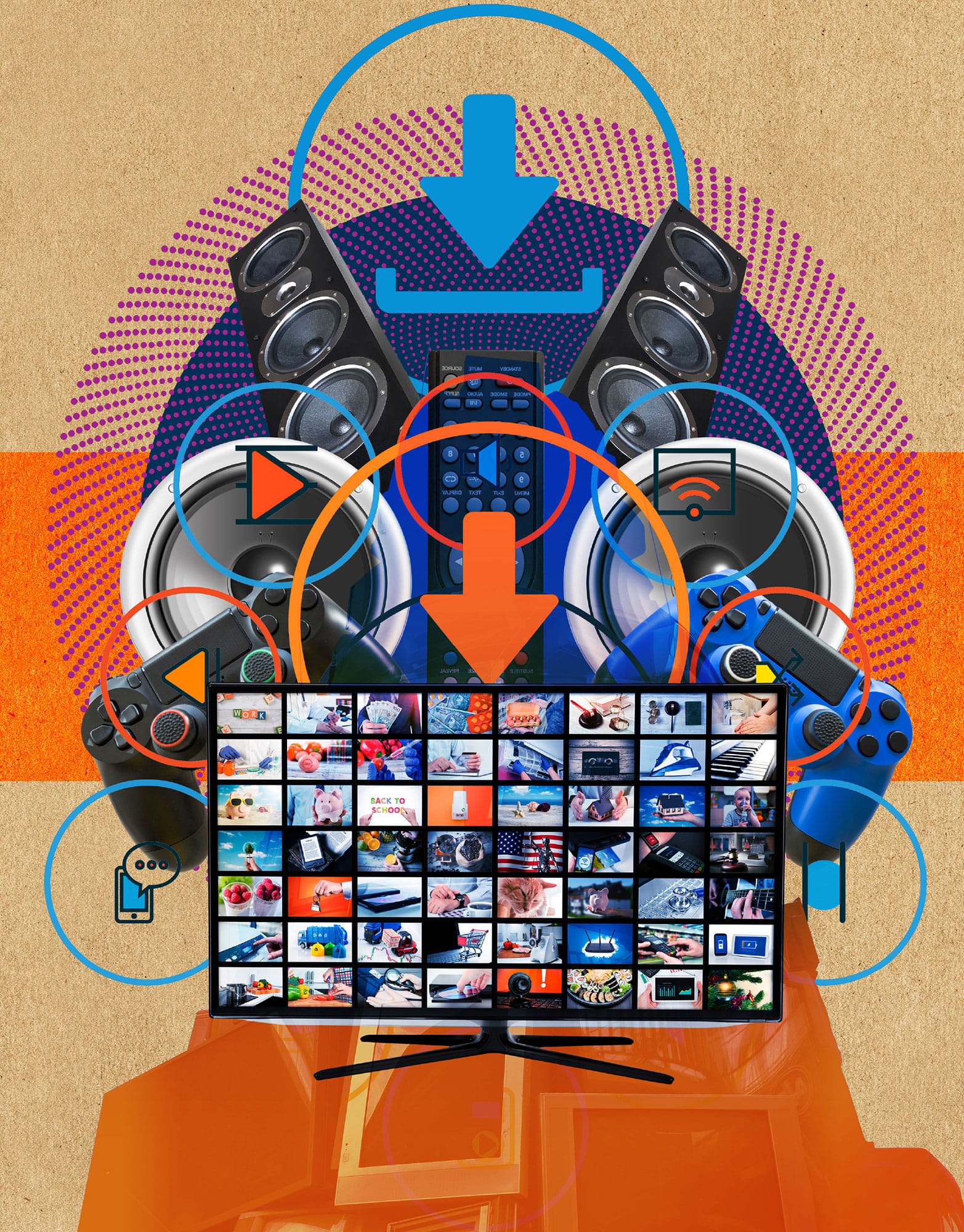
INDUSTRIAL, CORPORATE & INSTITUTIONAL AI & ROBOTICS
INDUSTRIAL, CORPORATE & INSTITUTIONAL AI & ROBOTICS
GLOSSARY
aerial robotics Phrase coined by US engineer Robert Michelson in 1990. Flight robots are also often called drones. Their purpose is to perform unmanned missions in which they are self-navigating and able to interact with their environment and objects on the ground. Typical applications are military related, such as reconnaissance or demining, but aerial robots are also used for product delivery, photography, agriculture, smuggling, law enforcement and surveillance, disaster relief and scientific research.
cobot Portmanteau word for ‘collaborative robot’ proposed in 1995 by the research labs of General Motors. A cobot is designed to interact with humans in a shared workplace, supporting human operators in specific tasks that demand precision or force. Usually a cobot can adjust to its environment and detect abnormal activity via a system of sensors. Cobots are meant to be safer than robots, easily programmable by non-specialists, and flexible in the tasks they perform.
cyber The term comes from cybernetics, the study of control and communication in systems involving machines and humans. It often designates anything digital and connected to the internet, such as cyberspace, cyberbullying or cybercrime – crime that involves the use of a computer and a digital network.
hand guiding Technology connecting a human hand with a robotic hand that is usually intended to imitate it. The human user generally faces a camera that tracks the position of the human hand. The position of the hand is continuously updated, and the robot mimics the movement. A typical task for an industrial robotic hand is to pick up something in one location and move it to another.
heuristic Based on the Ancient Greek root meaning ‘to discover’, a heuristic approach is the creative use of any device, method or rule of thumb that will facilitate a discovery, even if this method does not seem directly correlated to the orthodox way things are usually done. In engineering, heuristics are experience-based methods used to reduce the need for calculations.
power and force limiting The use of cobots implies that incidental contact between a moving robot and a human body can occur. Power and force limiting (PFL) designates a technology that is meant to avoid injury from such a contact, or even to avoid it. This involves a minimal form of sensory perception so that the cobot can adjust to its environment. Whenever the robot initiates contact, it will represent a certain force, F, the power of which must be autonomously limited in an environment that is constantly changing.
proprioceptive senses Proprioception is the human bodily sense of itself as a whole and can be conscious or unconscious. Proprioceptive senses primarily include the sense of position and the sense of effort. In robotics, the challenge is to provide a machine with a minimal sense of its own integrity so that it can avoid self-damage.
safety-monitored stop Some robots are designed to stop operation when a human being enters the workspace. Safety-rated monitored stop allows the operator to interact with the robot when it has stopped, and operation automatically resumes when the person leaves the collaborative workspace. As the presence of cobots in workplaces increases, safety will be a key concern for manufacturers.
sense-and-avoid technologies Technologies concerning unmanned aerial vehicles, their purpose is to provide an aerial robot with the capacity to feel potential obstacles, such as birds or planes, and avoid them autonomously. Sensors collect and record data along the flying path, which is continuously analysed by a collision-avoidance program.
speed and separation monitoring Technology aimed at controlling the separation distance between a human and a robot. This distance must remain at all times protective, even when the human and the cobot perform tasks concurrently. The machine has to have safety-rated monitored speed and stop functions. An important property of the sensors includes the capacity to self-evaluate under which conditions the system should return to its normal mode of functioning.
universal automation Concept patented by US inventor George C. Devol in 1954, which he shortened to Unimate. It described a robotic arm that was programmable and ‘teachable’. Today, the concept of artificial general intelligence includes the idea that an AI could perform a variety of tasks with great flexibility.
UNIMATE, THE FIRST INDUSTRIAL ROBOT
the 30-second data
Humans are born with a full body but robots first existed as mere arms: automated handling devices. Unimate, the first industrial robotic arm, was created by US polymath inventor George Devol. It was installed in 1961 at the New Jersey General Motors plant, efficiently lifting and welding hot metal parts with its hydraulically driven joints. Initially, it could operate 150 hours without technical failure (and later up to 400 hours). Along with entrepreneur Joseph Engelberger, Devol created the company Unimation, a portmanteau for universal automation – the idea of flexible robots fulfilling many tasks and evolving over time. Rather than transistors, the machine was originally controlled by vacuum tubes used as digital switches. In the 1960s, human labour was abundant and US industry in a dominant position, so many regarded automation as unnecessary. But a team of Unimates could help produce up to 110 cars per hour! Soon, international car manufacturers (Fiat, Chrysler, Volvo and Ford) purchased their own version of Unimate, but it was the labour shortage in Japan and a collaboration with Kawasaki that really made Unimation’s fortune. In the 1980s, the ‘Isolation Syndrome of Automation’, a form of depression, appeared in Japanese humans who worked with robots all day long.
3-SECOND BYTE
A robotic arm implemented in the USA in the 1960s, Unimate was the most important automated device of the twentieth century, revolutionizing the car industry and the workplace.
3-MINUTE DEEP LEARNING
Collaboration with robots in the workplace is common today; many jobs are being automated. Collaborative robots are called cobots when the fencing that used to separate them from humans is removed. Cobot technology includes a safety-monitored stop (stops when the safety zone is violated), hand guiding (a human hand holds the arm), speed and separation monitoring (a laser tracks the position of the human worker) and power and force limiting (the robot can feel abnormal forces in its path and adjust).
RELATED TOPICS
See also
THE MERGING OF ROBOTS, AI & HUMANS?
3-SECOND BIOGRAPHIES
GEORGE DEVOL
1912–2011
American inventor; as well as the Unimate, he was involved in inventing microwave ovens, magnetic-recording devices, and automatic opening doors
JOSEPH ENGELBERGER
1925–2015
American entrepreneur and engineer. The first major entrepreneur in the robotic industry, he was Devol’s partner in 1956 when they created Unimation, the world’s first robotics company
30-SECOND TEXT
Luis de Miranda
Objects become universal makers as humans become mere users.
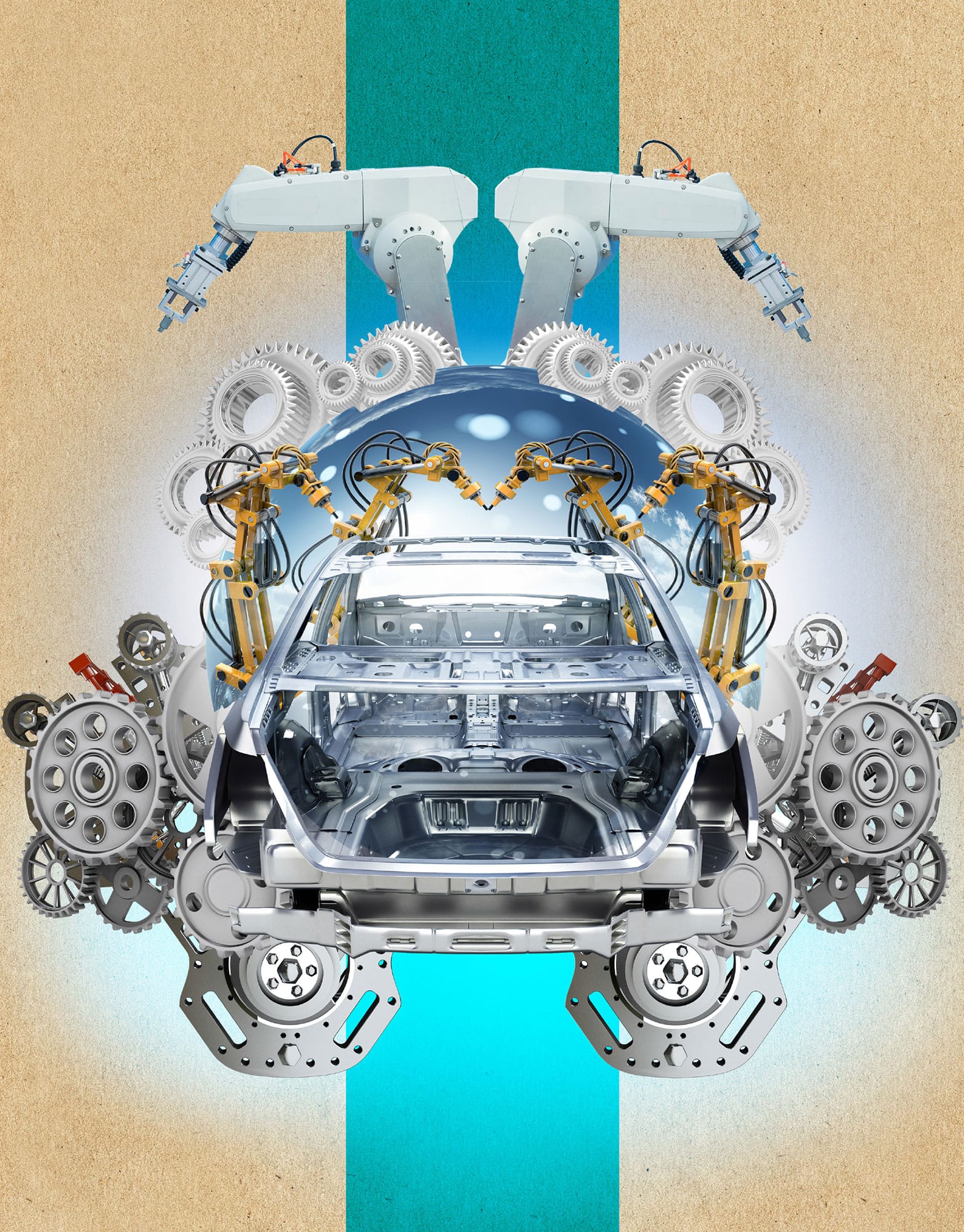
EXPERT & SECURITY SYSTEMS
the 30-second data
An expert system is a heuristic software: it helps humans find solutions by interpreting input, predicting results and suggesting alternative options. These systems ask questions like ‘what could happen next?’ or ‘why did this happen?’ If you wish to create a car or robot capable of discovering its own faults – and even self-repairing them – you need an AI expert system. In hospitals, expert systems are used for diagnosis. Increasingly, companies are implementing them for security, such as video surveillance, facial recognition and cybersecurity to avoid damage to a computer network. Advances in machine learning have made security systems easier to train and more effective. A group of researchers at MIT’s Computer Science and Artificial Intelligence Laboratory (CSAIL) recently built a system that could detect 85 per cent of cyberattacks. A more controversial use of expert systems is biometrics, which at the moment are mostly used for identification and controlling access to systems, and tracking people under surveillance. Some say that if applied to identify psychological traits or tendencies based, for example, on the shape of a person’s face, or life habits or genetic data (at border controls, the workplace or on mobile phones), biometrics could lead to a form of cyber-fascist political regime that would control our existence.
3-SECOND BYTE
Expert systems are a successful form of applied AI, capable of inferring solutions, inspiring decisions, or, when applied to security, preventing cyber threats.
3-MINUTE DEEP LEARNING
The more data that are fed into expert systems, the more accurate they become. While most of these systems still need to be supervised by humans. AI-powered tools might eventually be able to develop their own interpretations, and humans might not understand the logical foundations of them. Thus human supervision would have become redundant. As argued by philosopher Hubert Dreyfus, AI might contribute to the end of our intuitive faculty.
RELATED TOPICS
See also
COLLECTIVE AI & CLOUD ROBOTICS
3-SECOND BIOGRAPHIES
GEORGE ORWELL
1903–50
British author of 1984, a dark metaphorical novel anticipating a cyber-political regime in which privacy and freedom are banished
RICHARD KERSHNER
1913–82
American mathematician, he was one of the inventors of the world’s most famous expert system, the Global Positioning System (GPS)
30-SECOND TEXT
Luis de Miranda
Will we become overprotected? Protected from what we have not yet done and will never experience.
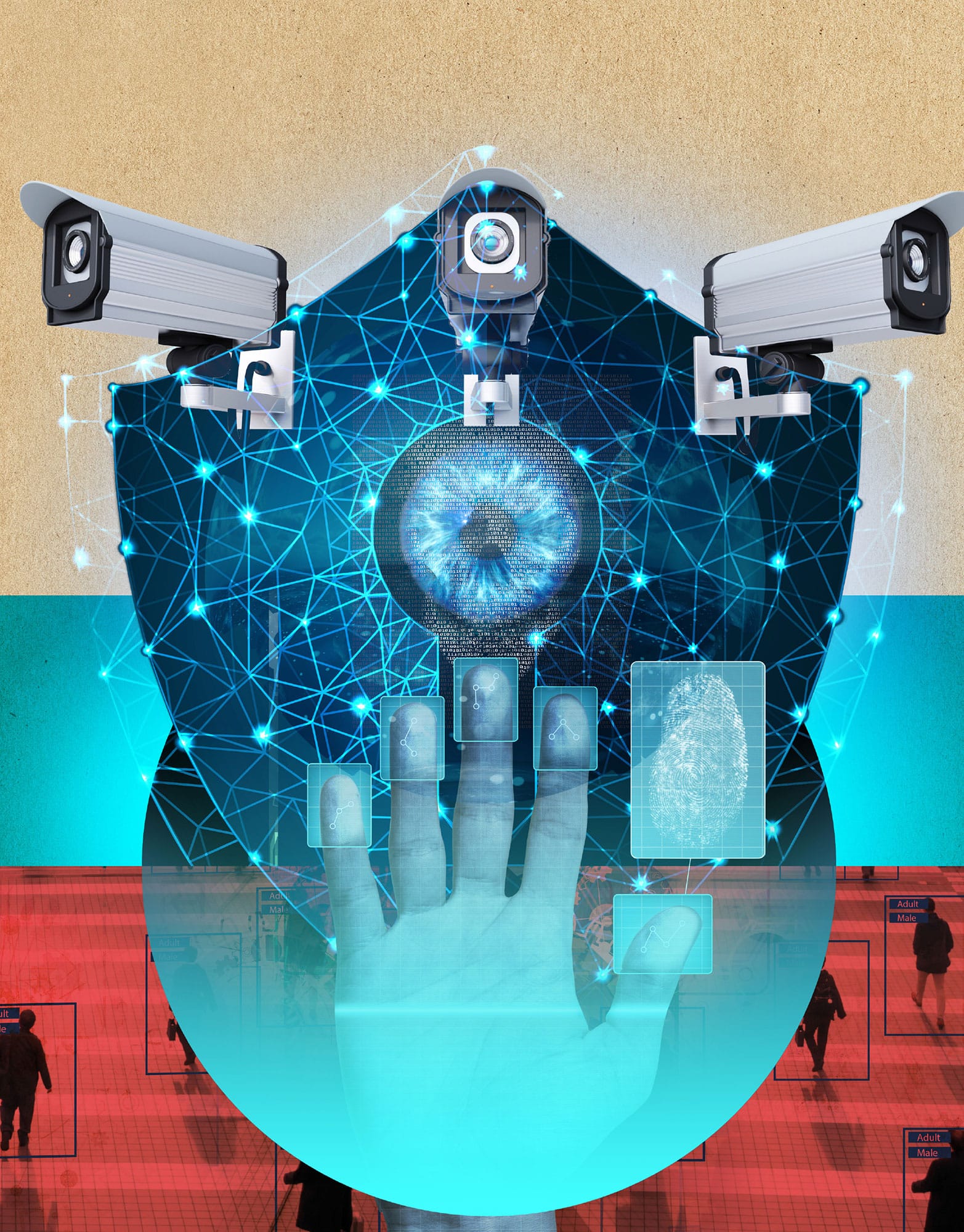
AI IN BANKING & FINANCE
the 30-second data
Most banks are investing millions in artificial intelligence in order to replace their human workforce, and in the hope of improving the efficiency of their procedures. Some repetitive tasks, such as fund transfers, are now fully automated. Some work that previously took thousands of hours now takes seconds, for example, the analysis of legal documents to extract important clauses. Chat bots or ‘conversational interfaces’ are also increasingly used as virtual assistants to communicate with human users and provide account information or help with online banking. More sophisticated ‘robo-advisors’, such as Erica from Bank of America, offer a form of financial guidance. Real-time machine-based learning is used to detect patterns of fraud via analysis of users’ big data. In stock trading, machine learning makes it easier to identify patterns that might not otherwise be detected by the human eye. More recently, banks have been investing in deep learning. By analysing unstructured data such as financial information on news sites or across social media, they aim to generate faster and smarter trading. Digital cryptocurrencies, such as Bitcoin, are confidential electronic payment systems that could potentially replace the need for central banks and many human jobs in banking and finance.
3-SECOND BYTE
Since the first automatic teller machines (ATMs) in 1967, computer software and hardware have slowly replaced humans in banking and finance.
3-MINUTE DEEP LEARNING
Experts attribute the acuteness of the 2008 global financial crisis partly to the fact that opaque computer programs entered into a destructive loop that snowballed across the financial system. Financial systems are all interconnected and often use similar equations and software, which adds to the potential dangers. The need for human oversight puts ethical and legal limits on using AI for finance. AI can help with black-and-white decisions, but the shades of grey will probably still be decided by humans for a while.
RELATED TOPICS
See also
3-SECOND BIOGRAPHIES
JOHN SHEPHERD-BARRON
1925–2010
British inventor who led the team that installed the first cash machine or ATM (Automated Teller Machine) in 1967
ANGUS DEATON
1945–
British-American economist who won the Nobel Prize for his work on health and wealth, believes that robots will cause a major global financial crisis worse than globalization
30-SECOND TEXT
Luis de Miranda
New currencies and new automated transactions might reinforce capitalism or accelerate its fall.
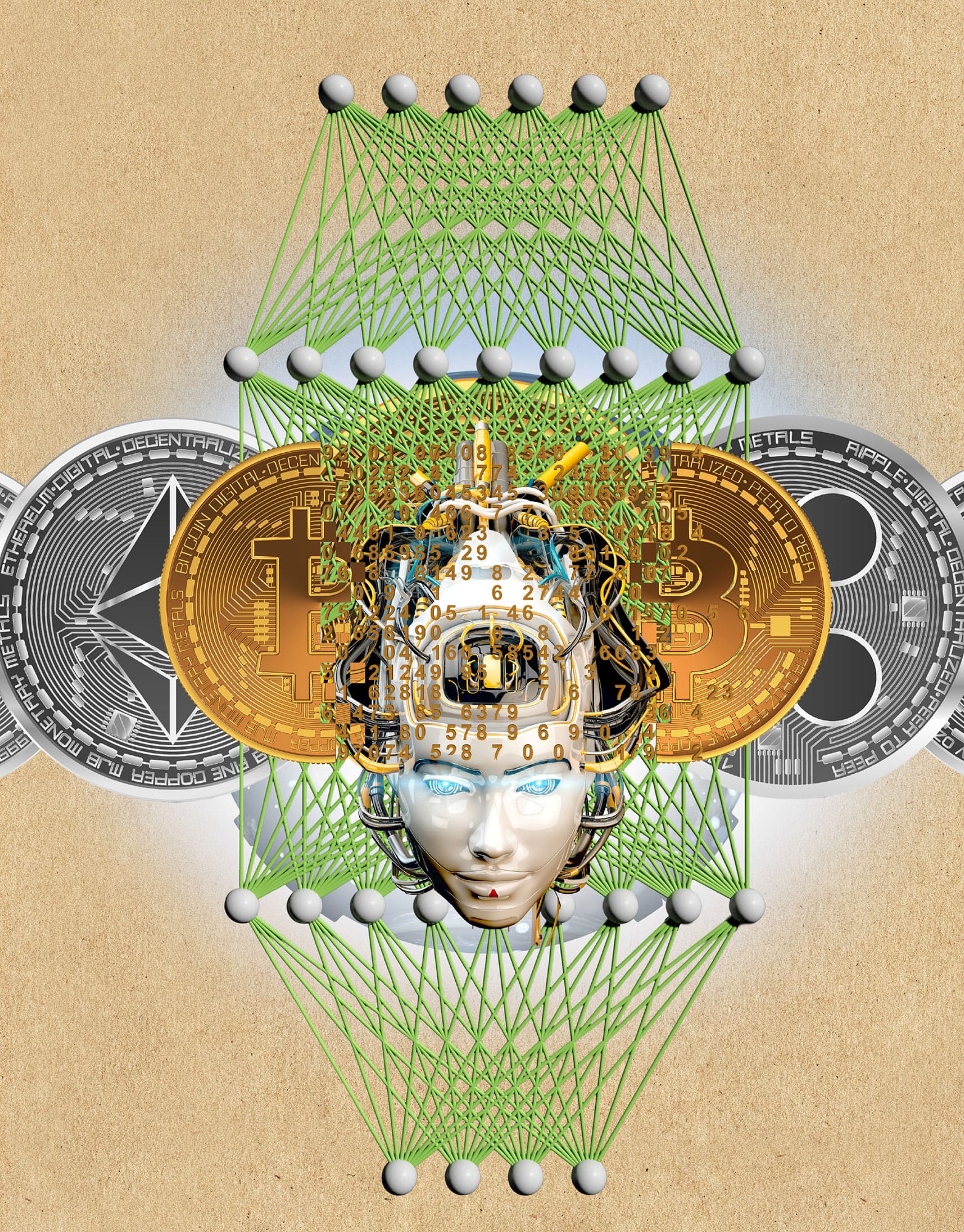
MEDICAL AI & ROBOT-ASSISTED SURGERY
the 30-second data
Minimally invasive surgery (MIS) was revolutionary when it first took off in the 1990s, reducing recovery time and causing less pain and fewer complications. By the time MIS became popular the following decade, researchers were focusing on making the process robot-assisted. Today, MIS can be done using robotic helpers. In robot-assisted surgery, the surgeon is provided with a magnified 3D view of the surgical site, and controls the robot through a tele-operation interface. The robot’s purpose is to increase the precision, flexibility and control of the surgeon. The cost of a commercial surgical robot can reach £1.7 million, plus hundreds of thousands of pounds in annual servicing costs. The cost is slowing down the global uptake of robotic technology. Also, after almost 17 years of use, evidence to prove that robotic technology provides significant benefits is still lacking. As of 2018, unmanned surgery had only been tried out on pigs. Even though the results are promising, from a social and ethical point of view, the idea of using fully autonomous robotics systems for surgery is controversial. Problems with the workspace, dexterity of the machine or errors in the robot’s sensory system could potentially prove fatal for the patient.
3-SECOND BYTE
Surgical robots are often used for minimally invasive and remote surgery to increase the precision, accuracy and flexibility of a surgeon even in delicate microsurgery operations.
3-MINUTE DEEP LEARNING
AI in the medical domain is not only concerned with building intelligent devices. It is also useful for analysing complex medical data for diagnostic and treatment purposes. Computer-aided diagnosis systems are a common form of medical AI that use pattern-matching techniques to interpret medical images. Such systems can work faster and more accurately than the human eye; however they are not used to replace the human doctors but to provide effective assistance.
RELATED TOPICS
See also
ROBOTS FOR PEOPLE WITH SPECIAL NEEDS
3-SECOND BIOGRAPHIES
VICTOR DAVID SCHEINMAN
1942–2016
American roboticist and designer of the Puma 560 (1985), which was the first non-MIS robotic arm that was used for placing a needle through the skin during a brain biopsy
JACQUES MARESCAUX
1948–
French surgeon; in 2001, he performed the world’s first transatlantic telesurgery operation from New York, USA, operating on the gallbladder of a patient who was in Strasbourg, France
30-SECOND TEXT
Ayse Kucukyilmaz
Will we learn to be suspicious of any human involved in medical processes?
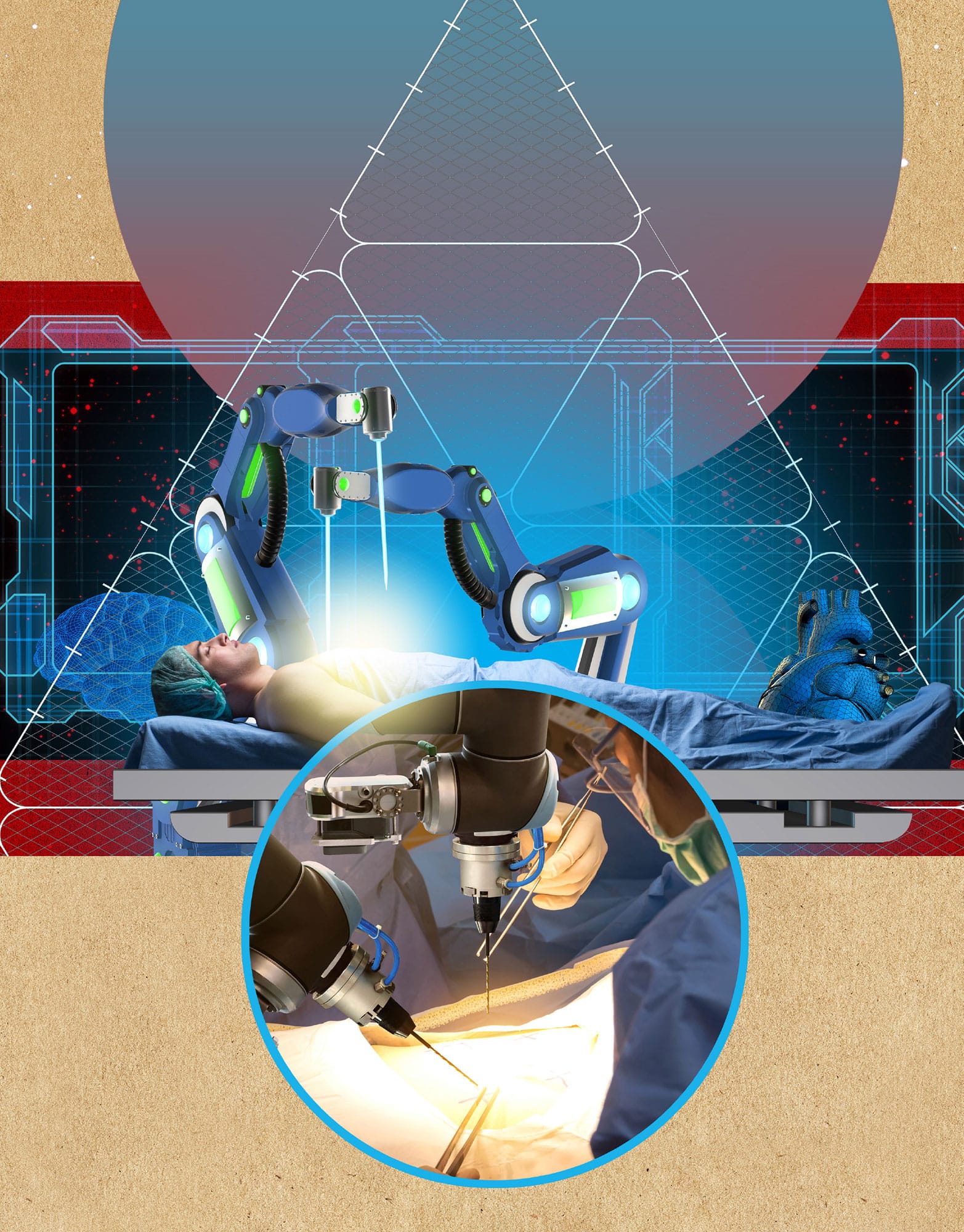
MILITARY AI & ROBOTICS
the 30-second data
In war any advantage may mean the difference between victory and defeat. Armies have always sought technological advantage: iron over stone, tanks over cavalry. Today, there is huge investment in AI and robotics. Military AI systems assist with strategy and data gathering. For example, AI systems operated by the US National Geospatial-Intelligence Agency have enhanced battlefield intelligence by analysing unstructured satellite data and producing a coherent story for human agents. AI systems also operate on a tactical level by autonomously monitoring the battlefield and tracking friendly and enemy positions. They can even manage communication systems, filtering available data and routing it to where it is needed. Humans decide how to act upon the data, so these systems are not strictly autonomous. However, the autonomy of such systems is increasing. The US military is developing AI systems capable of disrupting enemy AI, while defending itself from similar attacks. The 2016 DARPA Grand Cyber Challenge had seven systems competing to disable each other, and defend themselves, without any human intervention. The next step is to remove humans from the loop entirely. In 2006, the first prototype of an autonomous gun platform was deployed by South Korea, capable of targeting without human supervision.
3-SECOND BYTE
Military AI systems are used to supply strategic operational support, tactical support and to attack one another, but could also potentially attack human targets autonomously.
3-MINUTE DEEP LEARNING
In 2003, the United States deployed Patriot missiles in the Iraq War. One of the earliest US ‘lethal autonomy’ missile systems, it was designed to use lethal force with minimal human oversight. This was deemed necessary to allow it to track and fire on missiles within a very short engagement time. However, an over-reliance on this autonomy resulted in the system destroying two friendly aircraft, killing their crew. This may be the first instance of a lethal autonomous system killing humans.
RELATED TOPICS
See also
CAN MACHINES HAVE COMMON SENSE?
BIONIC PROSTHETICS & EXOSKELETONS
3-SECOND BIOGRAPHIES
ZHUGE LIANG
181–234
Chancellor of the State of Shu Han, China in the third century, he is credited with the invention of the land mine
HUGO GERNSBACK
1884–1967
Luxembourgish-American pioneer of science fiction who wrote an article in October 1918 entitled ‘Automatic Soldier’, possibly one of the first ideas for automated warfare
30-SECOND TEXT
Lisa McNulty
Is there a form of killing that is more acceptable than another?
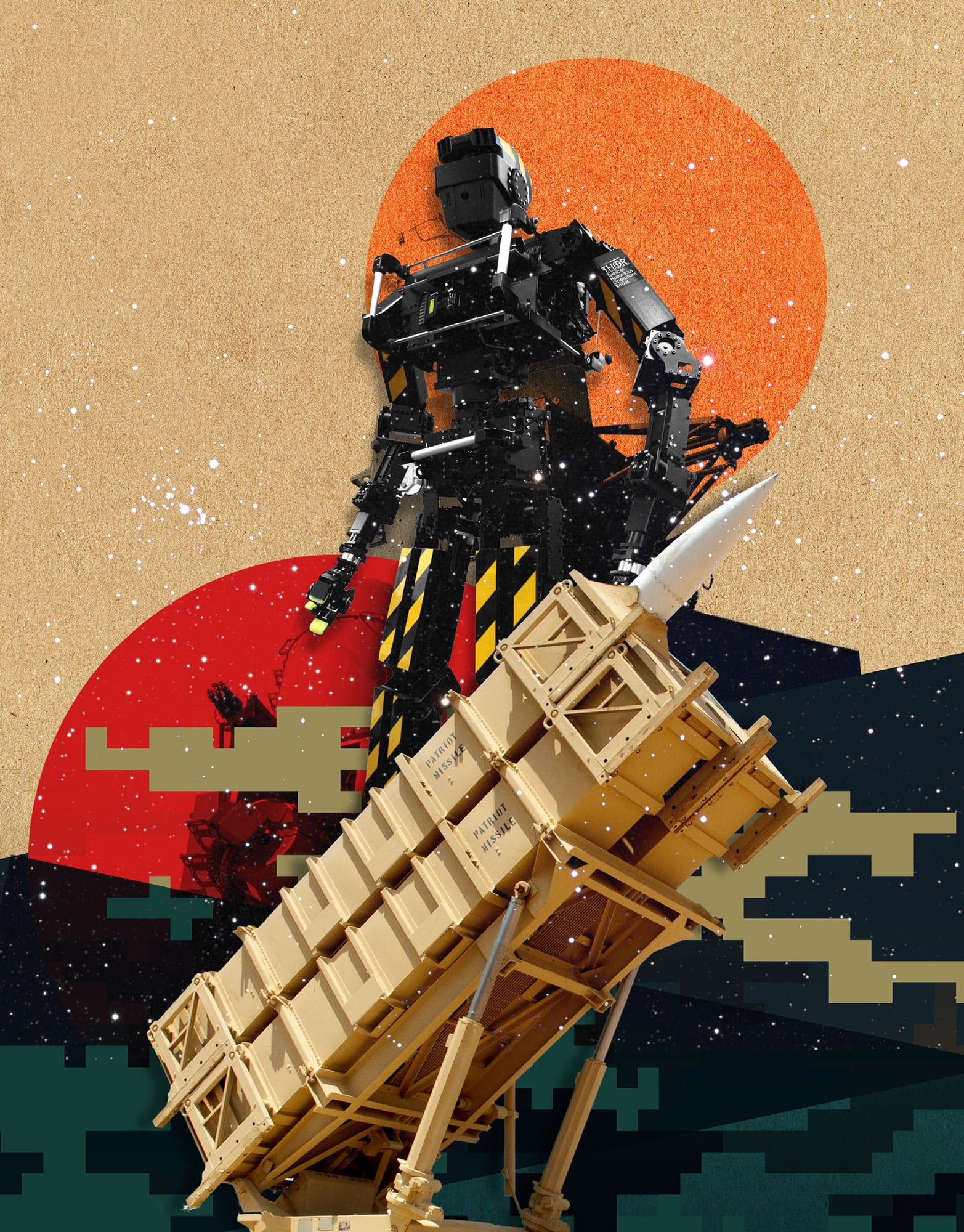
AERIAL ROBOTICS
the 30-second data
Unmanned aerial vehicles (UAV) are systems capable of sustained flight with no direct human control, and able to perform a specific task. Although related machines were flying as early as the Second World War, the drone boom really started in Japan, with the development of reliable Yamaha helicopters in the 1980s. Today, most operational aerial robots have fixed wings. These drones are used for remote sensing (spotting or mapping, in agriculture or geology), disaster response (flood monitoring, wildfire management), surveillance (by law enforcers, or maritime or border patrols), search and rescue missions, cargo transportation, communications, image acquisition (filming from new angles) and warfare (bomb dropping or spying). Path planning, object detection, recognition and mission management often require distant human operators, who remain in contact with the flying machine. There are few differences between these remotely piloted vehicles (RPV) and traditional manned aircraft, except that the pilot is on the ground and does not ‘feel’ the mission. Researchers are now developing AI-based navigation technologies that allow aerial robots to operate with minimal human control, and even to handle situations that cannot be detected at a distance.
3-SECOND BYTE
Robots that fly, often called drones, are used both for military and civilian purposes: surveillance, targeting, sensing, disaster response, image acquisition and delivery of goods.
3-MINUTE DEEP LEARNING
Aerial robots are the theme of much discussion in regulatory agencies, which must find ways to insert them into airspace occupied by other traffic, such as traditional aircraft. This is connected with the current development of sense-and-avoid autonomous technologies (to detect an unpredicted obstacle such as a bird or a plane and prevent impact) and the ability for aerial robots to communicate with other traffic and the ground-control infrastructure to avoid collisions.
RELATED TOPICS
See also
SPACE EXPLORATION ROBOTICS & AI
MULTI-ROBOT SYSTEMS & ROBOT SWARMS
3-SECOND BIOGRAPHIES
REGINALD DENNY
1891–1967
British actor, aviator and UAV pioneer, he worked with engineer Walter Righter to develop the large-scale manufacture of radio-controlled UAVs
ROBERT C. MICHELSON
1951–
US engineer, academic and inventor, sometimes called the ‘father of drones’, who invented the entomopter, an aerial robot
30-SECOND TEXT
Luis de Miranda
When it comes to drones, is human control an obstacle on the path to total control?
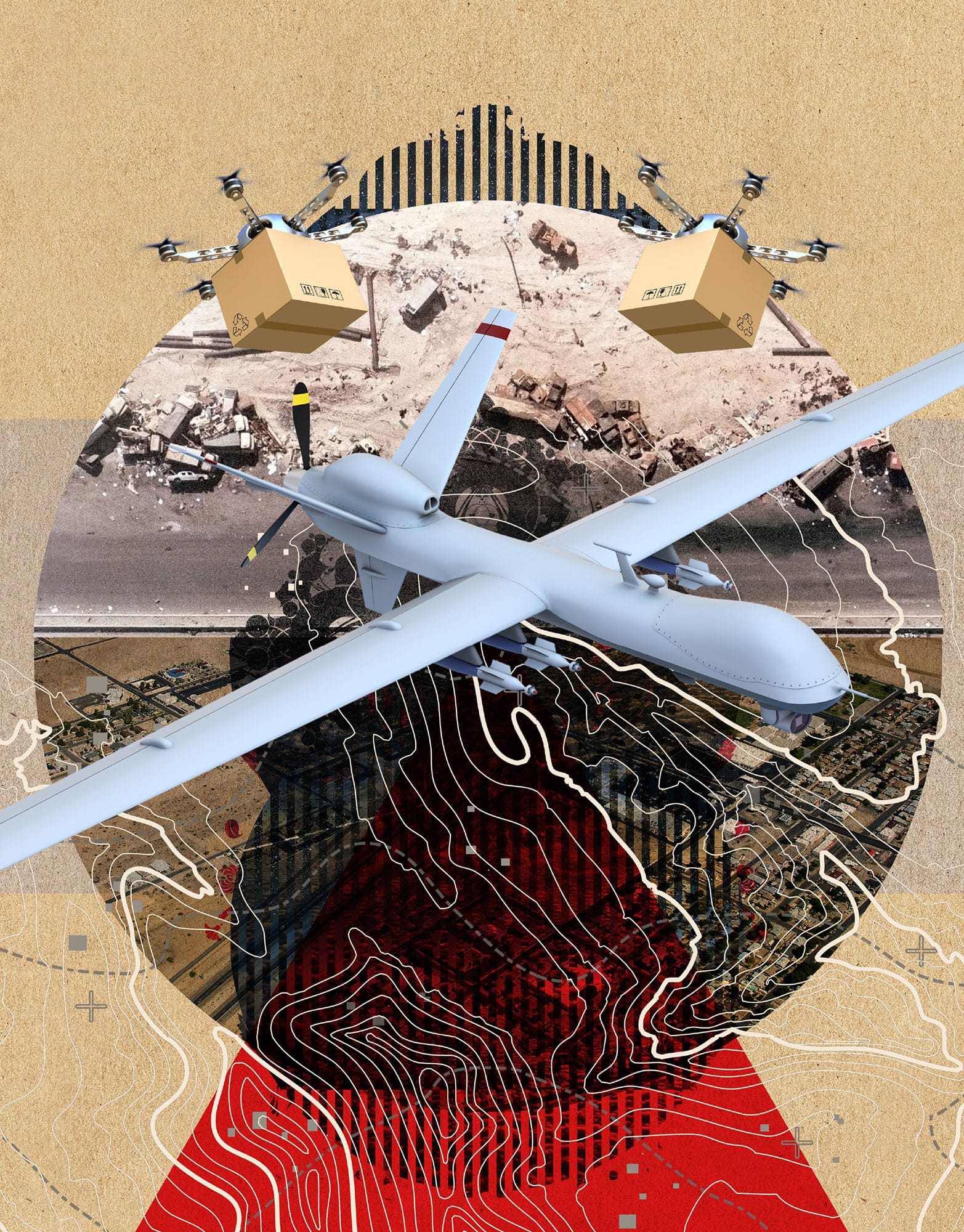
SPACE EXPLORATION ROBOTICS & AI
the 30-second data
When we send humans to space we must provide air, food, water and a way to bring them back. Unmanned spacecraft escape these complications but, given the vastness of space, it is not possible to maintain direct control of them. Receiving and responding to a signal from a spacecraft orbiting Jupiter can take as long as 106 minutes. To combat this problem, many space probes have been automated, usually with a set of pre-planned instructions to follow rather than any true decision-making capacity. The first AI system to control a spacecraft independently was the Remote Agent Executive on board the Deep Space One probe, launched in 1998. Since then, autonomous systems have helped spacecraft operate at a greater distance from Earth and carry out more sophisticated missions. In 2015, scientists upgraded the Mars rover Curiosity with an AI system to allow it to choose targets for its geologic laser to sample, freeing up significant bandwidth on the Deep Space Network for additional mission planning. The 2020 Mars Rover is designed to have even greater autonomy and be able to navigate terrain independently. Similarly, the Europa Clipper will autonomously identify and analyse short-term events such as ice plumes. As AI improves, NASA engineers are even considering probes that will dive beneath the ice on Europa.
3-SECOND BYTE
AI systems allow unmanned spacecraft to undertake more sophisticated missions and to operate at a greater distance from the Earth than would be possible with manned spacecraft or merely automated systems.
3-MINUTE DEEP LEARNING
A problem with space exploration is that there is so much data to churn through. For example, the Large Synoptic Survey Telescope (LSST) in Chile is set to take over 200,000 pictures every year. Reviewing all the data for interesting discoveries would be difficult for humans, but it is an ideal task for an AI system. AI researchers hope to use similar systems to analyse the enormous quantities of data from space observations around the world.
RELATED TOPICS
See also
HAL 9000 IN 2001: A SPACE ODYSSEY
3-SECOND BIOGRAPHIES
FREEMAN DYSON
1923–
An English-born physicist who proposed a semi-biological, self-replicating probe, nicknamed the Astrochicken, which could explore space more efficiently than manned craft
MARGARET HAMILTON
1936–
American computer scientist who led the development of software for the Apollo moon landings and invented the term ‘software engineer’
30-SECOND TEXT
David Rickmann
If aliens do not exist, then humans will create them.

AI IN THE ENTERTAINMENT BUSINESS
the 30-second data
Online entertainment providers use AI, in the form of recommender systems, to predict customers’ preferences for movies and music and recommend to them what they are most likely to enjoy. A recommender system can be seen as a ‘silent’ smart assistant that works behind the scene: it knows, in theory, what each customer tends to like and helps them in navigating and selecting products from the vast catalogue the online entertainment provider offers. For the system to provide accurate recommendations, it requires information about each customer, such as demographic data, the products they have selected in the past and how they rated them. This information is then used by an algorithm to predict customers’ preferences. Numerous scientific researchers have focused on the improvement of prediction techniques in recent years, and have designed sophisticated algorithms for recommender systems. The two basic approaches used in the design of such algorithms are based on the concept of similarity: items recommended to a customer may be similar to items she already liked or bought, or they can be items liked or bought by other customers the system thinks are similar to the first person.
3-SECOND BYTE
Part of daily life in the form of movies, music and video games, online entertainment is tailored for customers, who receive personalized recommendations identified with AI techniques.
3-MINUTE DEEP LEARNING
The broad adoption of recommender systems that filter results has been raising ethical concerns. For example, filtered recommendations may not inform customers about the variety of available products. In the context of news providers, this phenomenon is called the Filter Bubble: it isolates a customer inside a bubble, containing only the information selected for them, and shielding them from diverse sources. This may dramatically reduce customers’ options.
RELATED TOPICS
See also
SMART ASSISTANTS & ‘LITERATE’ MACHINES
CAN MACHINES HAVE COMMON SENSE?
30-SECOND TEXT
Sofia Ceppi
How can we deeply enjoy something that we are programmed to enjoy?
